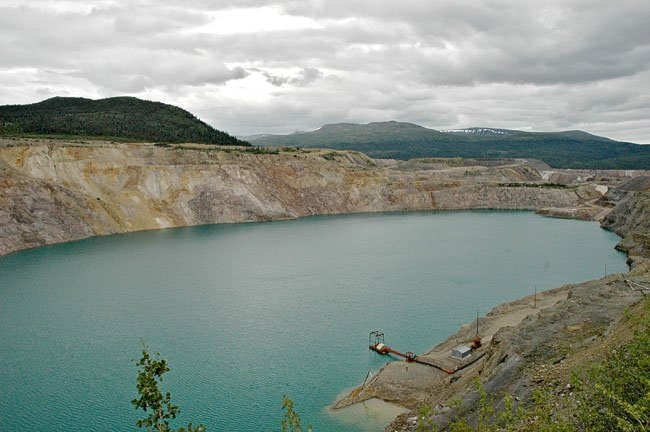For more than eight months, cleanup crews at the Faro mine have been stupefied by a mysterious source of contaminated water.
Concerns were initially raised in late October and early November following a routine water test that revealed unusually high levels of zinc at the surface of the north fork of Rose Creek.
Stephen Mead, the Yukon’s director of assessment and abandoned mines, said the findings were strange because high levels of zinc had never been detected in that area before.
“When you see a blip on the radar, you go back and make sure the tests are correct. We checked the lab results but we were still seeing elevated levels of zinc.”
According to British Columbia’s ambient water quality guidelines for zinc, high levels of the metal are always found in contaminated waters flowing through a bedrock system containing zinc deposits.
The 25 square-kilometre Faro site, once the world’s largest lead-zinc mine, consists of 320 million tonnes of waste rock and contaminated spill sites.
Mead said the metal can be highly toxic to aquatic life, but not to humans.
In trying to understand how widespread the issue was, a significant amount of monitoring was carried out to determine where the contamination was coming from.
Mead said it took them six weeks to “get a handle on what was going on,” as they were looking for a very small volume of water.
In late January, more than $1 million was spent on a drilling program in the eastern edge of the Faro waste dump, above the north fork, to estimate where the contamination was coming from.
Holes were drilled to sample underneath the waste rock pile in an attempt to find the source, but that was unsuccessful.
Meanwhile, the water quality was continuing to deteriorate and exceeded some safe levels for aquatic life.
“We saw it get worse in February and March, but then nature took hand,” Mead said.
“With the spring meltwater and the introduction of fresh water we began seeing the water quality improve naturally, but we still hadn’t found where it was coming from.”
Unable to find the source, the crews entered into a second phase of response.
On site two weeks ago, they came up with a solution they’re hoping will be effective before the weather gets too cold again.
“We’re looking at going into Rose Creek and trying to capture that contaminated water as it comes out of the base of that rock pile, and before it mixes with the freshwater,” Mead added.
If they manage to intercept it, they can pipe it into a storage area, a technique they’ve already used at three other areas of the site.
They hope to have that designed and constructed within the next 10 weeks, before the impacts of the source become too large.
“The level to which we have to manage all the water leaving the site is half a milligram of zinc for every litre of water,” Mead said.
“The water leaving the perimeter of the Faro site exceeded that amount by about 20 per cent for roughly two weeks. Inside the boundary is where this new contamination is coming out. It flows through the site and then leaves it; in that journey is where it is diluted and the end result is 0.6 milligrams of zinc per litre of water.”
At the very point where the water comes out of the rocks, however, the level of zinc was measured at up to tens of milligrams per litre of water and at its source, is likely 20 times that amount.
In contrast, some more contaminated water contained on site has been measured at up to 1,500 milligrams of zinc per litre of water.
The government has been in constant contact with First Nations groups and regulators, said Mead. “Everyone recognizes it’s an unfortunate situation,” he said.
In 2009, the estimated cost of the Faro cleanup project was pegged at $450 million.
As of March 31 this year, it stood at approximately $925 million.
That number will continue to be refined as the closure plan is further developed over the coming years.
Cleanup of the site is expected to take many hundreds of years.
Contact Myles Dolphin at
myles@yukon-news.com
